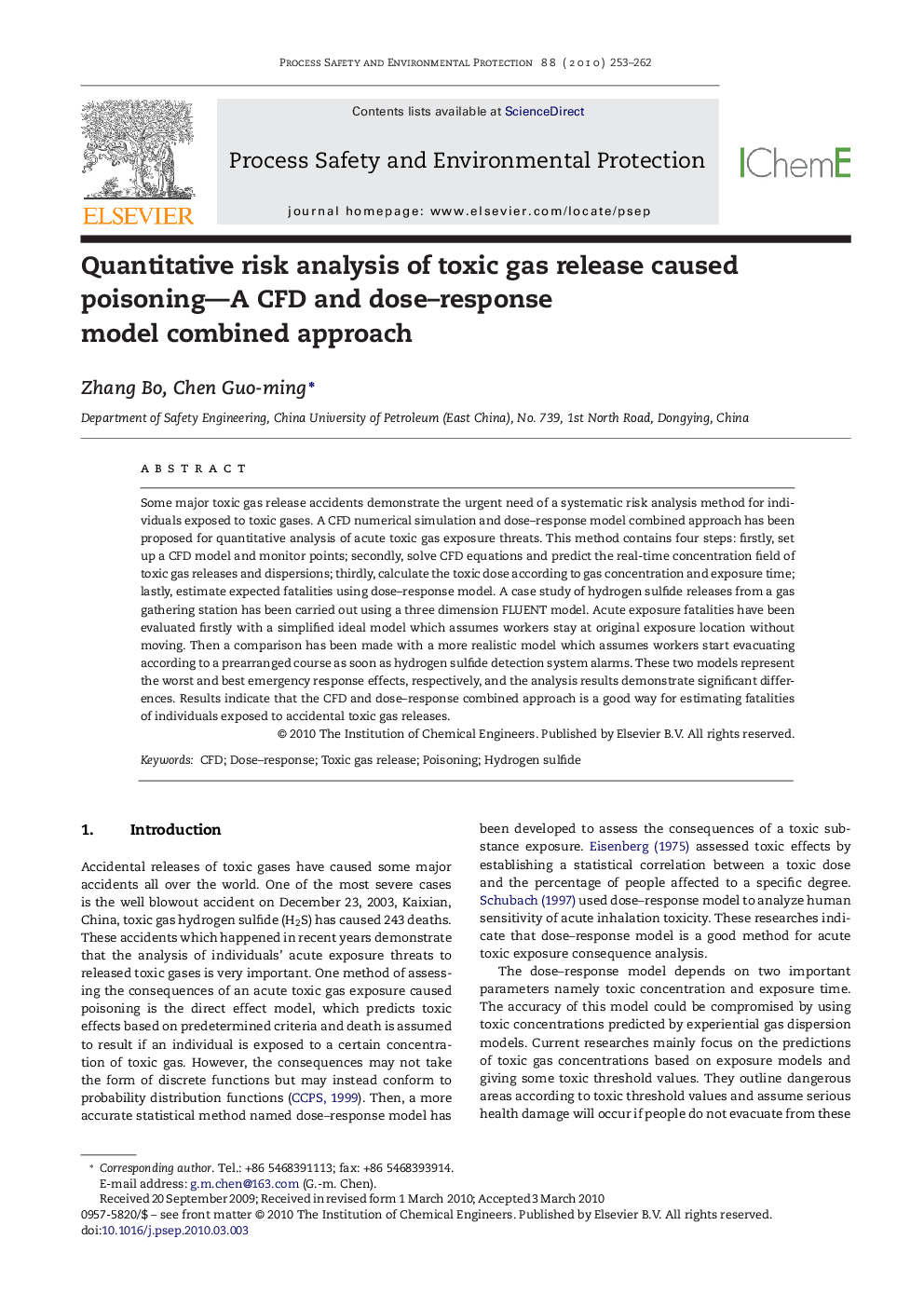| Article ID | Journal | Published Year | Pages | File Type |
|---|---|---|---|---|
| 588668 | Process Safety and Environmental Protection | 2010 | 10 Pages |
Some major toxic gas release accidents demonstrate the urgent need of a systematic risk analysis method for individuals exposed to toxic gases. A CFD numerical simulation and dose–response model combined approach has been proposed for quantitative analysis of acute toxic gas exposure threats. This method contains four steps: firstly, set up a CFD model and monitor points; secondly, solve CFD equations and predict the real-time concentration field of toxic gas releases and dispersions; thirdly, calculate the toxic dose according to gas concentration and exposure time; lastly, estimate expected fatalities using dose–response model. A case study of hydrogen sulfide releases from a gas gathering station has been carried out using a three dimension FLUENT model. Acute exposure fatalities have been evaluated firstly with a simplified ideal model which assumes workers stay at original exposure location without moving. Then a comparison has been made with a more realistic model which assumes workers start evacuating according to a prearranged course as soon as hydrogen sulfide detection system alarms. These two models represent the worst and best emergency response effects, respectively, and the analysis results demonstrate significant differences. Results indicate that the CFD and dose–response combined approach is a good way for estimating fatalities of individuals exposed to accidental toxic gas releases.
